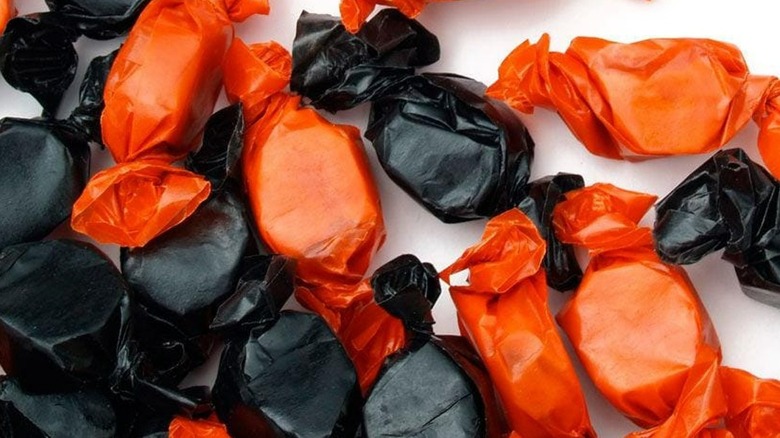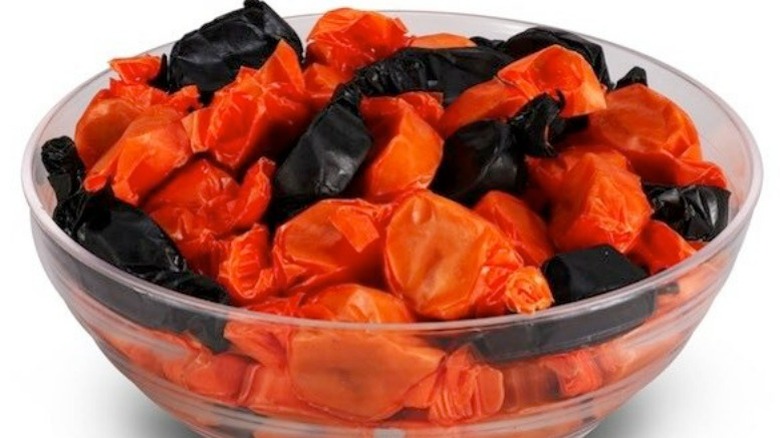The History Behind Those 'Gross' Peanut Butter Kisses
You're a little kid, sitting in your grandparent's house. While you truly love your grandparents as any grandchild would, even you can't help but notice how "old" their house is. The TV's one of those old heavy box-shaped ones with the wooden framework and dials — not that it matters what it looks like since they only get five channels on the thing anyway. They have those creepy kewpie dolls that look like a cross between cherubs and the Campbell Kids that you're not allowed to touch. And don't forget those glass dishes full of candy, be it those weird strawberry hard candies that you never see anywhere else or those "gross" beige candies that are wrapped in black and orange waxed paper and taste like overly chewy peanut butter. What are those things called? Peanut butter kisses?
Unlike the famed Hershey's kisses, peanut butter kisses aren't exactly what most kids are looking for to be dumped in their buckets this Halloween. So disliked are these candies that, according to Thrillist, the city of High Point, North Carolina actually put out an order "banning" them from being given out on Halloween. While Candy Store lists them as not being as offensive to the modern trick-or-treater as circus peanuts (those big, hard, orange peanuts) and candy corn, it's still strange to see people so furious about a candy that's just peanut butter and molasses.
Who is behind these controversial candies? Where do they come from? And who exactly are they for?
Peanut butter candies have been around since the 1900s
According to The Food Historian, these peanut butter-like candies are known as Mary Janes, supposedly named after inventor Charles Miller's aunt. Miller, the son of a confectioner himself, invented the Mary Jane taffy by folding peanut butter into molasses-flavored taffy, creating thin rectangular pieces of candy. Over time, the infamous peanut butter kisses in the black and orange wrapping paper came to be. While the two may seem similar, Mary Janes and peanut butter kisses differ in their size, with the kisses being round and oval-shaped compared to the thin, flat Mary Janes.
Charles Miller and his candy company are no longer around, meaning that someone somewhere must still be manufacturing the candy. According to Northeast News' research, the candy is only produced by the Melster Candy Company, although they were made by different companies throughout the years. Candy Industry, however, reported only a few days after Northwest News' publication that Atkinson Candy Company would be producing Mary Jane candies in a collaboration with famed candy company Spangler.
But are peanut butter kisses truly as hated as some say they are? It seems that some individuals actually enjoy these peanut butter chews — under the right conditions. A 2006 post from Candy Blog notes that the salty taste of peanut butter goes surprisingly well against the "woodsy" sweet maple. The post also explains that these candies are best enjoyed fresh and chewy, rather than hard and stale like some have experienced.

